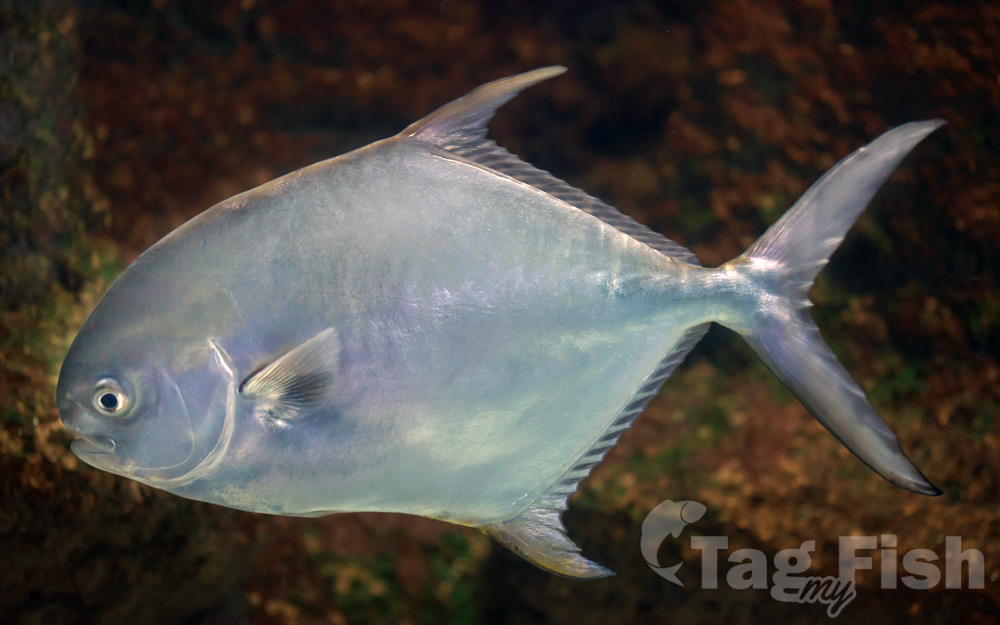Permit
(Trachinotus falcatus)

Classification
General data
Description
Permit can be distinguished by their elongated dorsal fins and anal fin. The dorsal fin is shaped like a scythe. Permit tails are also deeply forked, and their bodies are compressed laterally, making the fish tall and thin when viewed from the front.
The average permit has six or seven dorsal spines, and 18 to 21 soft rays. The anal fin has two or three spines, and 16 to 18 soft rays. Both dorsal and anal fins have dark, anterior lobes. Permit have no scutes and have a large, orange-yellow patch on their abdomens in front of their anal fins, while their pectoral fins are dark.
The permit fish can reach a maximum length of 48 in (122 cm) and can weigh up to 79 lb (36 kg).
Distribution and habitat
Permits are usually found in shallow, tropical waters such as mudflats, channels, and muddy bottoms. Although permits are found close to shore and even in some brackish areas, they spawn offshore. Young are found usually in the surf zone where small invertebrates are available for them to eat.
Permits are found in the western Atlantic Ocean from Massachusetts to Brazil, including most of the Caribbean islands.











